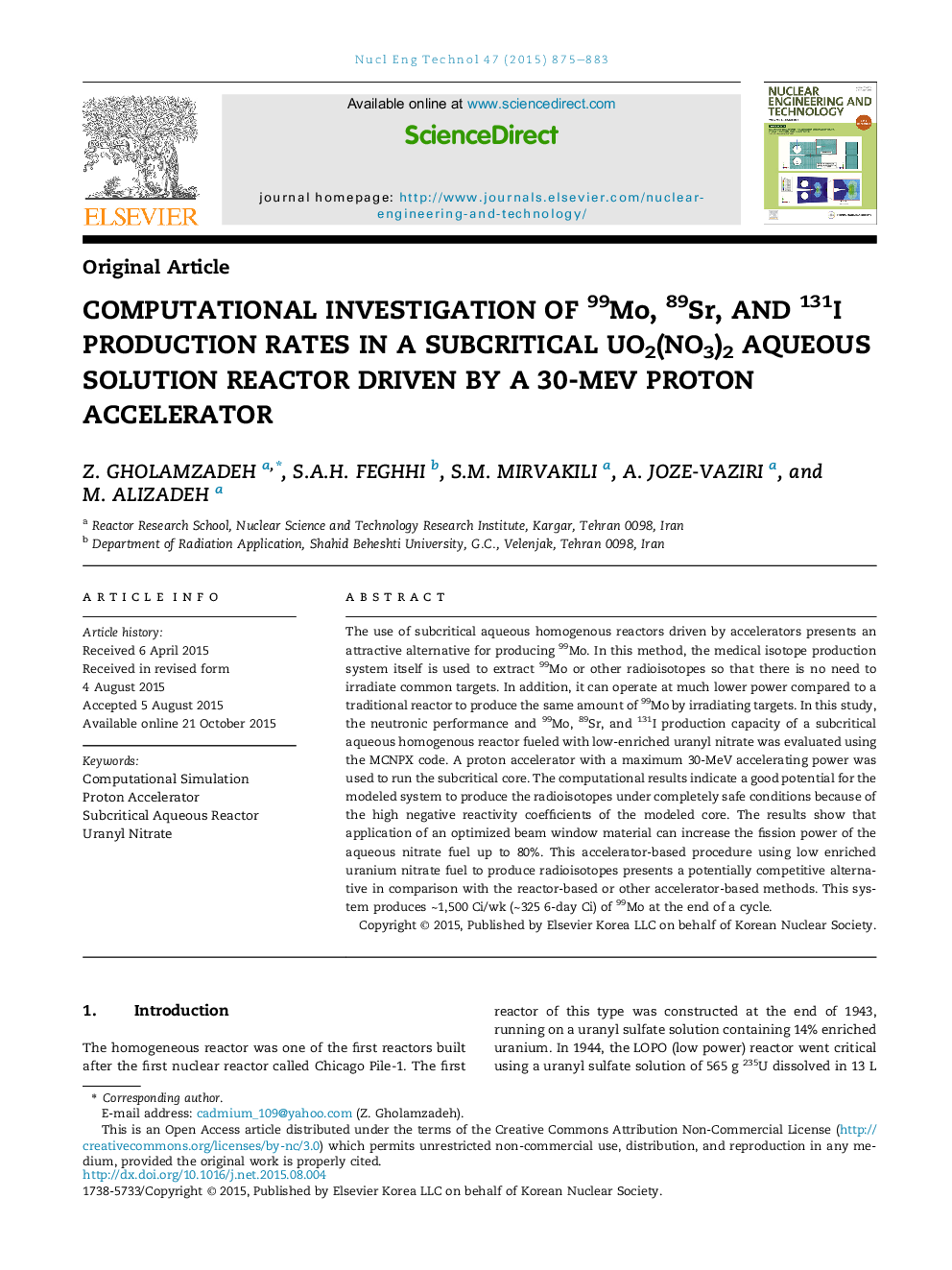| Article ID | Journal | Published Year | Pages | File Type |
|---|---|---|---|---|
| 1740067 | Nuclear Engineering and Technology | 2015 | 9 Pages |
The use of subcritical aqueous homogenous reactors driven by accelerators presents an attractive alternative for producing 99Mo. In this method, the medical isotope production system itself is used to extract 99Mo or other radioisotopes so that there is no need to irradiate common targets. In addition, it can operate at much lower power compared to a traditional reactor to produce the same amount of 99Mo by irradiating targets. In this study, the neutronic performance and 99Mo, 89Sr, and 131I production capacity of a subcritical aqueous homogenous reactor fueled with low-enriched uranyl nitrate was evaluated using the MCNPX code. A proton accelerator with a maximum 30-MeV accelerating power was used to run the subcritical core. The computational results indicate a good potential for the modeled system to produce the radioisotopes under completely safe conditions because of the high negative reactivity coefficients of the modeled core. The results show that application of an optimized beam window material can increase the fission power of the aqueous nitrate fuel up to 80%. This accelerator-based procedure using low enriched uranium nitrate fuel to produce radioisotopes presents a potentially competitive alternative in comparison with the reactor-based or other accelerator-based methods. This system produces ∼1,500 Ci/wk (∼325 6-day Ci) of 99Mo at the end of a cycle.
